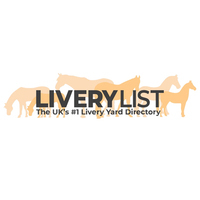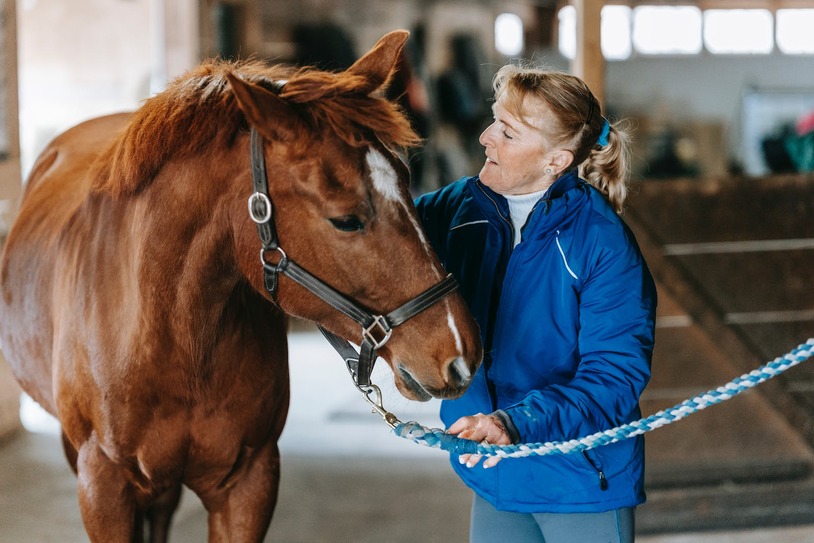What’s in a livery package?
Once upon a time, finding livery for your horse was a simple affair. You either wanted to own a horse and look after it yourself, or own a horse and have somebody else look after it for you on a day-to-day basis. How things have changed!
There is now a plethora of livery types growing in number year-on-year to cater for the specific requirements of horse owners and horses across the UK, all devised from differing demands of horse owners in the level of care and intervention for their equines.
Long gone are the days of a simple choice of DIY (do-it-yourself) or part and full livery. We now have dedicated livery packages according to the age, size, discipline and many other factors. A large determinant of this has been a downturn in the industry and many yard owners looking to find a niche market for their livery services to help them stand out from the rest. With the increases in costs that many yard owners are experiencing, the price of livery is going up in general which means that more and more of these bespoke livery packages are appearing as yard owners try to nail down exactly what it is that is being asked of them of potential clients into concise packages.

Below we will be looking at traditional livery types, as well as some of the newer livery types that are hitting the market…
-
DIY Livery: a long-standing favourite, DIY livery provides you usually with a stable and grazing and use of the facilities if available – and the horse owner undertakes all day-to-day care of the equine themselves. There is also a variant on this of DIY grass livery whereby no stable is provided and the horse lives out year-round. This is the most cost-effective, yet labour heavy, livery package available and has grown in popularity again recently with those looking to cut costs given the recent financial difficulties.
-
Part Livery and Full Livery: these classic options provide stable and grazing and that all or part of the care of the equine is taken care of by the yard. This may include turning out, bringing in, mucking out, haying, feeding and watering as well as grooming and riding if these are specified in part of the package, sometimes called “full ridden“ livery. Often these days there is a blurred line between exactly what defines part or full services. These package types are also often broken down into 5-day and 7-day packages allowing horse owners to undertake the care of the equines on a DIY basis at the weekend if they prefer. Usually a majority of part and full livery packages also include the provision of feed, forage and bedding but it’s down to the individual provider as some are now finding it more cost-effective for horse owners to provide their own consumables.

-
Schooling, Training and Competition Livery: these are not new packages as such but are now often tailored to focus on individual disciplines or trainers. These are usually on a full livery basis whereby the yard owner – usually an experienced and/or qualified equestrian– provide services including full care and exercise of the horse on a long-term or short-term basis which could include preparing for and attending competitions, training for specific disciplines or to eradicate particular behaviours or vices and these days can also include training for both horse and rider in terms of instruction and competition support.
-
Retirement or Veteran Livery: these services are usually dedicated to older equines or those who have been retired due to illness or injury and no longer have a ridden career. Usually on a full livery basis, this means that the care is usually targeted to consider the welfare of older equines in terms of farriery, veterinary and general care and tends to be on a calm and quiet a yard with basic facilities and usually rurally located.

-
Track, Natural, Equicentral, Organic and Paddock Paradise Livery: whilst these are all slightly different, these livery types encourage natural outdoor living for equines of all types and ages. Whilst Equicentral and Paddock Paradise relate to specific principles for equine care, all these livery types promote natural lifestyles for the equine and are becoming increasingly popular.
Track livery pertains specifically to a type of livery whereby traditional paddocks are not used and the equines are turned out in herds onto a (usually) hard standing or mixed surface track that encourages movement and natural foraging. This can include hay stations, natural features such as streams and ponds, open barns and other features encouraging natural behaviours. Natural and organic livery can also often also relate to grass livery or livery where natural habits are encouraged in a similar way to track livery but where traditional paddocks are used. The exact services and situation at these yards can depend on how the framework of these livery types have been interpreted by the yard owner.
-
Luxury Livery: This is a new phrase that has been developed in the last couple of years by yard owners who want to sell a comprehensive and high-end livery service. These yards often offer full livery with additional services or extras included, and are often based at dedicated equestrian premises with outstanding facilities for care and exercise that would be beyond the expectations of a “normal” livery yard. These types of yard also often include additional services for their livery clients such as clubrooms or private riding clubs. However, with the connotations of “luxury“ it is often now being applied to other livery types such as retirement livery to imply a highly professional inclusive service for their clients.

-
Working Livery: this relates to livery for an equine at an establishment such as a
riding school, trekking centre or educational establishment such as an equine college. This often provides full livery services at a reduced fee in return for using the horse or pony for a set number of hours per week at the facility. This does offer some restrictions on the availability of the horse for the owner, but can also be a great help for those that don’t have the time to exercise or ride their horses enough, ensuring that they have suitable work that’s overseen accordingly. This is often limited to specific horse or pony types that have a certain level of experience and temperament making them suitable for the work.
-
Stud, Stallion and Youngstock Livery: these are specialised livery services for breeding mares, stallions and young horses or ponies. The yard itself may or may not be a stud facility (ie no stallion on site or breeding programme) but will offer specific care for in foal mares, mares with foal at foot and youngstock. Often the yard will have specific facilities and the yard and staff will be highly experienced in the handling, socialisation and training of young horses and well-versed in the practical requirements of dealing with breeding activities.
-
Rehabilitation and Therapeutic Livery: this type of livery relates to a yard that can offer specific on-site therapies and treatments which may be ideal for resting or rehabilitating equines following illness or injury. The yard will often have additional
therapy equipment such as weighbridges, wet or dry treadmills, solariums, aquatic treatment systems or even cryogenic treatment cabins. They also often have professionals on site such as equine therapists, who work closely with a veterinary team to ensure the necessary care and therapies are provided to the equines on the yard.

-
Sales Livery: not to be confused with the dealer’s yards, sales livery will be offered by yards that specifically focuses on the preparation and marketing of equines that are up for sale on behalf of the owner. These yards can often assist with the sale from beginning to end right from photo shoots and marketing to trials and the final transaction. These are usually done on a full livery basis plus an agreed commission rate from the owner once the horse is sold. They will often have excellent facilities for preparing the equines for sale, if necessary, and also for trials by potential new owners.
-
Pony Livery: dedicated pony livery is somewhat a new trend. This type of livery yard is for ponies under 15 hands and specialises in providing fun and entertaining livery that welcomes children and their families. Occasionally this type of livery is offered at a riding school but there are becoming increasingly standalone yards offering this option. They often include a range of livery services, which could be anything from DIY to full livery, and many of them also offer weekend riding clubs, mini shows and riding activities for their clients.

-
Holiday Livery and Short-Term Livery: the phrase “holiday livery” can have two meanings, both short term but one where an owner who may keep their horse at home goes away and needs their equine cared for and so sends it to a livery yard for the time they are absent- a bit like a kennels for horses and the other where you can stay somewhere for a
holiday with your horse (with or without human accommodation). In general, these types of short-term livery services offer just that, as a short-term livery option perhaps whilst you are between yards, selling an equine or going away.
-
Tailored Livery: tailored livery relates to a completely bespoke package for horse and owner. This tends to be offered by yards who have the ability to be flexible and to offer bolt on services as and when necessary, and can therefore be more cost effective with only the services provided when needed.
So where does this leave you with the type of livery package that you need?
Aside from the livery packages on offer and the titles they are given, the range of facilities can vary hugely just from the amount of turnout that the horses have throughout the year to riding facilities they may offer such as arenas or cross-country courses, and the location in terms of hacking, or the experience and support offered by the yard staff so its important to consider every aspect of a yard aside from the package it can offer.
The most important thing when considering a livery yard is that the yard is the right place for horse and owner. They need to be able to meet the needs of the equines whilst providing a convenient and affordable service for the horse owner. Often a livery yard will offer multiple livery packages enabling horse owners to find the right yard and pick a package accordingly, but often horse owners find themselves on a yard where they package may be perfect, but the rest does not meet their expectations, or vice versa. It is therefore important to ensure that a yard is right in terms of all aspects before committing to a yard move.
You can find all types of livery available at yards across the UK on
LiveryList, the Uk’s #1 Livery Yard Directory, as well as support in the
Yard Owner Hub for yard owners and managers.



